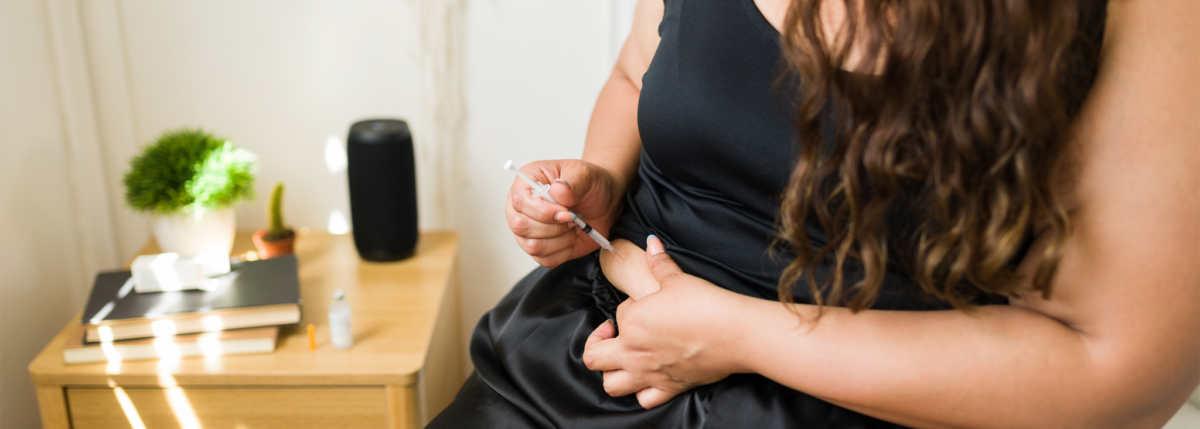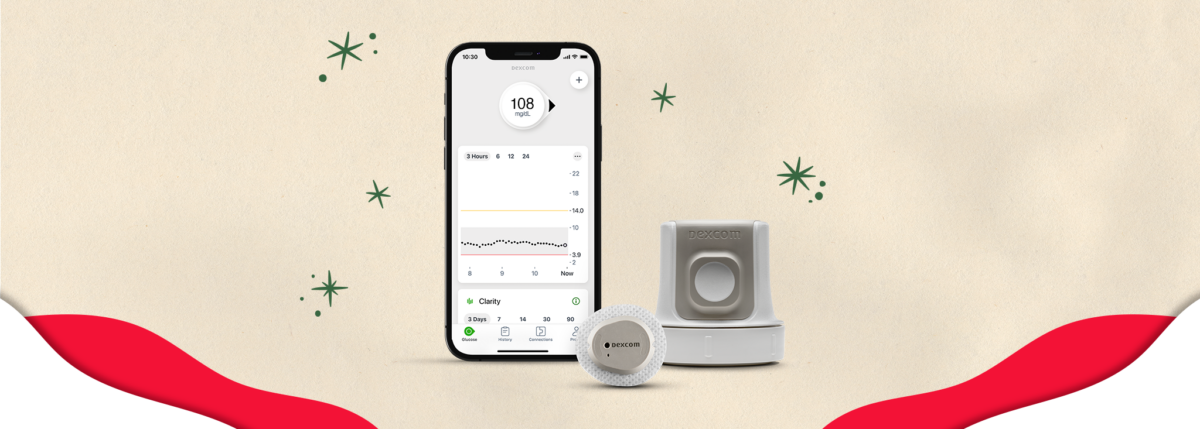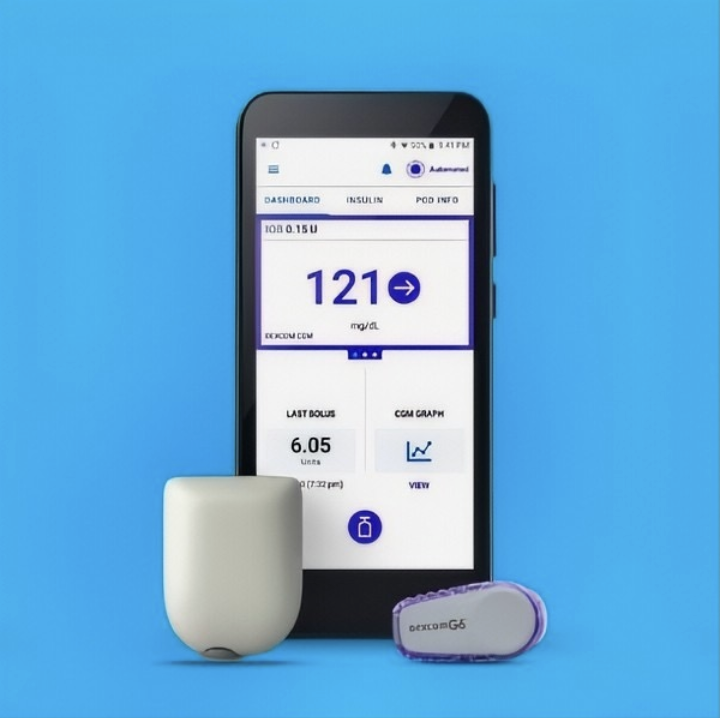This is How a CGM Changed my Diabetes Management
Written by: Chhavi Chadha
4 minute read
January 9, 2023
I was diagnosed with type 1 diabetes (T1D) in 2014 when I was 23. Like half of all people with T1D, I was diagnosed as an adult, and there was a learning curve as I adjusted to this new way of life.
Successfully managing my diabetes can feel like a full-time job, but the right resources, tools and guidance helps me keep a check on my blood sugar numbers. Getting a continuous glucose monitor (CGM) has been one of the best decisions for my diabetes management.
Learning to live with diabetes
Learning to monitor blood sugar levels is crucial for managing diabetes. For my diabetes management, small but significant calculations and decisions like carb counting, pre-bolusing insulin, a list of foods to avoid and split blousing for pizza (extremely important!) became a part of my daily life.
At that time in my life, my days were long and busy. After my diagnosis, I’d often find myself sitting through work meetings with hypoglycemia because I miscalculated my bolus. I would wait until the meeting finished before rushing back to check my blood sugar and correct a low because—all because I didn’t want to disturb a meeting. It’s not that my colleagues weren’t supportive, I just didn’t want to be the person that held up an entire meeting.
I say this because we all take our time to learn to live with diabetes, and often, sharing our diagnosis with others takes time. This was also true for my personal life; I would often cancel plans or leave dinners early if my blood glucose levels were acting up.
Blood sugar readings became part of my routine
In the early days of living with T1D, the most minor and mundane activities started to grab my attention because of how they impacted my blood glucose levels. I quickly had to learn to be prepared to handle highs and lows.
I began checking blood sugar before, during and after being active to understand how exercises impact my blood sugar differently. I also learned to adjust my blood sugar management around my menstrual cycle. I increase my basal insulin at the end of my cycle and check my blood sugar much more frequently at the beginning of my period when my blood sugar often crashes.
The list will be different for different people, but the one common thing: Diabetes management requires a conscious effort on your part; there is no escaping it.
Diabetes is called an “invisible disease.” If you didn’t see me giving myself insulin shots or checking my blood sugar, how would you tell that I was a person living with diabetes? That’s why, five years after my diagnosis, I cautiously agreed when my endocrinologist insisted I try continuous glucose monitoring.
Using a CGM came with a learning curve
At first, I was skeptical about CGM. I guess I wasn’t ready to share my diagnosis openly yet. But, I had read up about how it could help me manage my diabetes and the pros outweighed the cons.
Just like everything before it, learning to live with the CGM came with a learning curve. I’d learned the ropes of self-monitoring by then and knew that the CGM would be a tool to help me better manage my diabetes.
After getting used to my newest diabetes device, I realized that wearing a CGM would be a game-changer for my diabetes management.
Here are four reasons why I love my CGM:
1. Daily blood glucose graphs
Diabetes is different for everyone. Different foods, situations and activities impact people’s levels differently. Being able to see your blood sugar levels over a period of 24 hours helps you learn about your unique patterns.
2. Less finger poking
Before my CGM, I would test my blood glucose at least 8-10 times a day—more if I felt I was experiencing hypoglycemia or hyperglycemia. With my CGM, I only prick my finger to calibrate a new sensor.
3. It’s convenient
I am often surrounded by people at work or when traveling, so being able to check my numbers with a sensor is quicker and more convenient. (It can also be very discreet if that’s a consideration for you!)
4. It’s my diabetes journal
Lastly, I treat my sensor reports as a diabetes journal. I learned this late in the game, but I now keep a copy of my CGM reports. It helps me identify patterns I can share at my next endo appointment (more on that below).
It doesn’t always replace a finger prick
CGM is a piece of technology. As impressive as it is, it isn’t always accurate. If the CGM shows I’m going low, but I don’t feel it, or if I feel a hypo coming on, but the CGM doesn’t show the same, I always use a regular finger prick test to confirm my blood sugar levels.
How CGM has improved my diabetes management
It’s safe to say that I have become better at diabetes management because of the CGM. Here are three ways CGM has changed my diabetes management:
More data-oriented diabetes management
For me, good diabetes management is a mix of multiple small decisions taken throughout the day. For example, if I had a fasting reading of 200 mg/dL in the morning and took a correction dose, when it’s time to bolus for my lunch, knowing the trend of my current blood sugar levels will help me calculate my bolus accurately.
When I started my CGM, I calculated the insulin-to-carb ratio based on sporadic blood sugar levels taken throughout the day. After starting to use a CGM, I looked at six weeks of my blood sugar readings and adjusted my carb ratio based on my blood sugar data.
Pinpoint foods that affect my blood sugar levels My CGM helped me figure out which foods are not good for my blood sugar levels. A few proteins like whole black grams (a popular snack in India, where I’m from) lead to delayed spikes for me, so I avoid eating them. I figured this out using my CGM.
Another example: A protein like paneer takes my body four to six hours to digest completely and I see a rise in my blood sugar at around five hours after eating. So, I end up split bolusing to manage the spike.
Family and friends can track my blood sugar levels in real-time
Many of the CGMs available today do more than just monitor blood glucose (BG) levels. For example, my parents, siblings and close friends now follow my numbers in real time.
This feature is also beneficial for kids and people who experience nighttime lows.
CGM data + my endocrinologist appointments
My CGM data is instrumental in ensuring that my endo appointments are fruitful. My endocrinologist asks all her patients to log their foods. With my food log and CGM reports in hand, we discuss the peaks and troughs in the graphs and check to see if a meal or activity could have caused it.
With diabetes, there isn’t an answer for every high or low, but the CGM can help you understand 90 percent of it.
I’m still reaping new benefits from my CGM
A year ago, I moved from an insulin pen to using an insulin pump. Using myCGM with the pump is crucial, especially for calculating my basal dose.
With the help of my favorite diabetes tech, I have been able to get my time-in-range to about 85 percent, and I only intend to keep improving this number.
Lastly, besides the obvious benefits of diabetes management, CGMs make for a great conversation starter and spread more awareness about T1D.
Editor’s Note: Educational content for newly diagnosed people with diabetes is made possible with support from Abbott, makers of the Freestyle Libre 3 system, a partner of Beyond Type 1 at the time of publication. Editorial control rests solely with Beyond Type 1.

Author
Chhavi Chadha
Chhavi is an auditor-turned-marketer and was diagnosed with type 1 diabetes in 2014 as an adult. Her diabetes advocacy journey began in a bid to bring visibility to the “invisible” condition. She holds an MBA from India and worked with an Indian marketing agency as a content strategist before moving to Canada. When not working, she spends time reading fiction and experimenting with one-pot vegetarian recipes.
Related Resources

If you use insulin to manage diabetes, it’s normal to have questions about which option...
Read more

The holiday season is filled with celebrations, family gatherings, and plenty of holiday foods. No...
Read more

Ah, the holidays! A season of festive gatherings, spirited celebrations, and enough indulgence to make...
Read more

